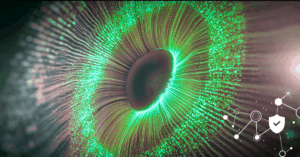The Convergence of IoT and IT Demands a New Approach to Visibility

From employee workstations to the security cameras monitoring buildings, modern organizations have highly interconnected IT and IoT systems. That interconnected ecosystem contains diverse and varied devices, often using different protocols, running diverse operating systems, and moving across multiple physical locations.
Even when these systems and devices are working seamlessly, organizations often have difficulty identifying all devices communicating across their networks. What’s more, many organizations adopt specialized tools for monitoring traditional IT assets and their Internet of Things (IoT) devices, creating a fractured and, often, incomplete view.
To implement holistic security coverage across all devices, organizations need asset visibility that includes traditional IT and IoT to create consistent controls that mitigate data breach risks.
The Device Ecosystem: Identification Challenges
Most organizations manage an average of 165,000 digital assets, like:
- Workstations
- Servers
- Network devices, like routers
- Mobile phones
- IoT devices, like thermostats, medical pumps, HVAC, and industrial sensors.
Across this diverse landscape, IT and security teams need to create a thorough asset inventory. However, many companies struggle to gain true asset visibility.
Traditional Tools Fail for IoT Devices
The endpoint discovery tools that help identify traditional devices struggle to work for IoT devices. While still challenging, traditional IT assets are often easier to identify for various reasons, including:
- A limited number of operating systems makes it easier for scanners to understand them.
- Centrally managed software makes it easier to locate and list the applications and services running on the devices.
- Expanded memory and storage, enabling organizations to download asset inventory software to track the devices.
Meanwhile, IoT devices are far more diverse, creating unique challenges arising from:
- Diverse operating systems and firmware that are often proprietary, industry-specific, or vendor-locked, preventing standard scanners from recognizing and adequately categorizing them.
- Limited processing power and storage mean they are unable to support traditional endpoint agents and inventory software.
- Unconventional or legacy protocols that traditional IT discovery tools fail to interpret.
Multiple Tools Increase Your Attack Surface
In response to these challenges, many organizations implement two different asset detection and vulnerability identification solutions. In some cases, organizations have different solutions for:
- Identifying IT assets: continuous discovery with deeper context while addressing shadow IT and rogue devices.
- Vulnerability scanning for IT assets: active scanning that supplements the IT asset discovery tool and identifies security weaknesses.
- Identifying IoT assets: reaching across segmented networks outside the scope of traditional IT asset tools while responding to IoT devices’ inability to install agents and their unique protocols.
- Vulnerability scanning for IoT assets: identifying outdated firmware, insecure configurations, default credentials, and known common vulnerabilities and exposures (CVEs).
Many organizations use three or more different technologies to identify their entire asset ecosystem and the vulnerabilities associated with it. This expands the number of potential access points that attackers can use to gain access.
Data Siloes and Inconsistencies Decrease Visibility
As the organization adds more technologies, it collects more data. In theory, this provides insights. However, in reality, the different technologies often maintain their own databases with different identifiers and interpretations. Rather than providing visibility, this collection of tools leaves organizations with the following issues:
- Manual, time-consuming, and error-prone data correlation that often requires reconciling spreadsheet data.
- Lack of context about asset criticality makes vulnerability prioritization difficult.
- Delayed incident response times as the security team works to piece together information across these divergent sources.
- Compliance violations occur when fragmented data prevents consistent, accurate asset records.
Unified Asset Visibility with Passive Scanning Solutions
For many organizations, unified asset visibility feels like an impossibility. This view can be true when starting from the foundation of traditional IT asset tools. However, as organizations mature their security posture and incorporate IoT identification, classification, and monitoring, the solutions they adopt can help build a single view of their entire device ecosystem.
Passive Scanning for Identification and Classification
Identifying and managing IoT devices requires using passive network scanning technologies that monitor all network traffic to identify, classify, and profile every connected asset. These solutions are agentless and never interact with the devices, overcoming the primary challenges that organizations face when deploying traditional IT asset tools.
Since these solutions understand how the devices communicate across the network, they work equally well to identify both IT and IoT devices, enabling organizations to:
- Identify all connected devices by using network traffic patterns, enabling visibility into all operating systems, firmware, and services.
- Profile devices with attributes that include manufacturer, model, firmware version, and protocols.
- Build a unified inventory that integrates with existing ITSM, CMDB, and security platforms.
- Provide context into assets and networks when correlated with data generated by vulnerability scanners, endpoint detection and response (EDR), network access control NAC, and cloud Application Programming Interfaces (APIs).
One Solution for Two Technologies
IoT device connectivity is more fragile than IT asset network connectivity. Small disruptions from the network can take IoT devices offline. Since IT assets are already more resilient, the passive scanning solution has no impact on their service. Simultaneously, it gives organizations a way to consolidate some tools and augment others.
By using a passive scanning solution to identify and classify all devices, organizations gain benefits like:
- Consolidating all identification data in a single location for improved data correlation.
- Streamlining configuration management by collecting all data from the same tool to eliminate discrepancies from different identifiers.
- Comprehensive vulnerability prioritization by ingesting IT vulnerability scanner data and applying analytics.
- Capturing packets from across the device ecosystem rather than purchasing a specific tool for IT and IoT devices.
Operational and Financial Benefits from Consolidation
The average organization manages between 70 to 130 discrete security tools. As organizations work to reduce spending and improve operations, eliminating any tools becomes a budgeting win.
By implementing a passive scanning solution to identify IT and IoT devices, organizations achieve benefits like:
- Reduced spending with lower licensing costs, less infrastructure overhead, and fewer staff hours spent reconciling conflicting data.
- Creating a single source of truth with one, continuously updated asset inventory that integrates with other security and IT solutions.
- Faster incident response by correlating data for a more complete picture across IT and IoT devices.
Asimily: Comprehensive Visibility Across IoT, OT, IoMT, and IT
With Asimily, security teams gain better insight into all assets connected to their systems. Our comprehensive, passive asset identification and classification capabilities provide visibility into every device category, enriched with the context necessary for actionable risk management. By consolidating discovery functions into a single, integrated platform, Asimily enables organizations to eliminate redundant tools, break down data silos, and accelerate incident response while safeguarding sensitive operational workflows.
To learn more about Asimily, contact us today.
Secure Every IoT Device.
Automatically.
Cyber threats move fast — so should you. Asimily gives instant inventory and smart, prioritized risk mitigation insights for every IoT, OT, and IoMT device — so you can take action before threats strike.




